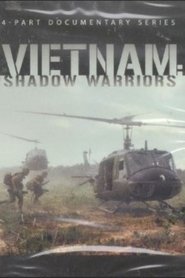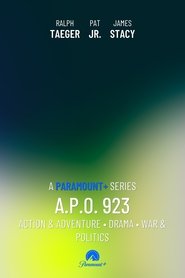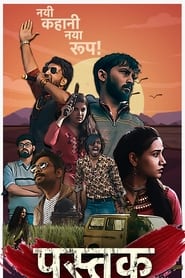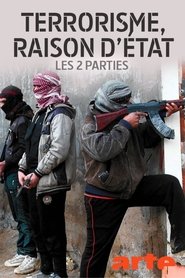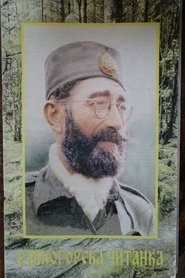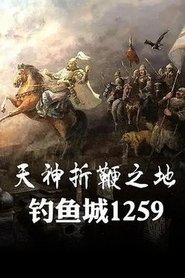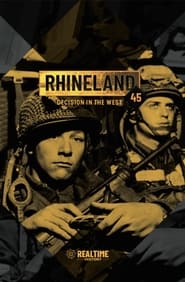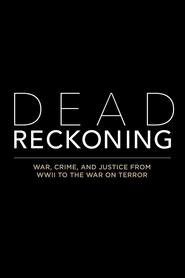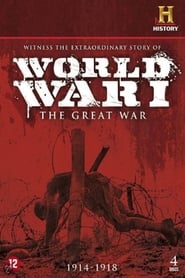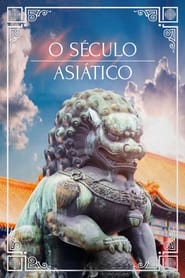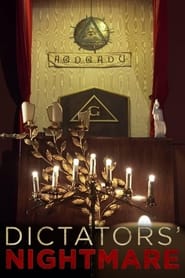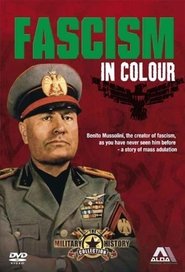Popular War Politics TV Series - Page 117
-
Vietnam - Shadow Warriors
2011
Witness the Vietnam War, its roots, its battles, its heroes and the price paid in the name of freedom. This stunning, detailed collection shows the war with heartbreaking realism. It looks at troubling questions about America's justification for the conflict, the horrors of jungle warfare and the human calamity of the war. Ultimately, it profiles the courage of the soldier who put their lives on the line in the name of patriotism. -
Σήμερα
2022
Σήμερα
2022
-
Post Factum
2019
-
In Their Footsteps
2011
In Their Footsteps
2011
In Their Footsteps is a ten-part documentary depicting Australian families and war. The first episode aired in Australia on 8 May 2011 on the Nine Network. In each episode an Australian will retrace the steps of a close ancestor’s wartime experience. -
A.P.O. 923
0000
A.P.O. 923
0000
APO 923 was a proposed one-hour adventure television series, set in World War II and created by Gene Roddenberry. It was not picked up by the network, and only the pilot episode, "Operation Shangri-La", written by Roddenberry, was filmed. That episode can be viewed at The Paley Center for Media in New York City. -
The German Weekly Review
0000
"Die Deutsche Wochenschau" was a unified newsreel series released in the cinemas of Nazi Germany. The coordinated newsreel production was set up as a vital instrument for the mass distribution of Nazi propaganda at war. -
Pustak
2022
Pustak
2022
'The series is set in a fictional town, 'Pustak' and follows the intertwined journey of four friends - Shiv, Rishi, Pushkar and Azhar - who get influenced by the area's politics and mafia. -
Terrorism: After 9/11
2017
star 8How the war on terror launched by the Bush administration after September 11 has worsened the threat of terrorism. -
Special Report with Bret Baier
2009
star 7Special Report with Bret Baier is an American television news and political commentary program appearing on Fox News Channel, currently hosted by Bret Baier. It airs live each Monday through Friday at 6:00pm ET. The show focuses on both reporting and analysis of the day's events, with a primary focus on national political news. The show has been a part of the Fox News program lineup since 1998 and is the number one cable news broadcast in its time slot. Brit Hume hosted the show from its debut in 1996 until his retirement in December 2008. He has since appeared on the program as a panelist commentator. -
Battleground Vietnam: War In The Jungle
2005
The Vietnam War was one of the worst horrors of the second half of the 20th century and the causes behind it continue to baffle people to this day. How did it start? What were the justifications for America's involvement in Nam? Could it have been avoided altogether? Though it is long over, the Vietnam War will always remain fresh in the minds of the men who fought and the millions who lived through a decades-long conflict right in their backyard. Battleground Vietnam: War in the Jungle covers it all from beginning to end with more than six hours of original footage that brings the battle closer to home than ever. -
Ravna Gora Scrapbook
0000
Ravna Gora Scrapbook
0000
Documentary TV mini-series about the royalist movement in Serbia during WWII, led by general Draža Mihailović. -
天神折鞭之地:钓鱼城1259
2015
天神折鞭之地:钓鱼城1259
2015
-
Rhineland 45
2021
Rhineland 45
2021
The Battle of the Rhineland was one of the largest WW2 battles the Allies fought on German soil and part of the critical final campaign against Nazi Germany on the western front. The Battle for the Rhineland was a series of operations in early 1945, the dramatic finale of the Allied advance from the coast of Normandy to the borders of the Reich. The desperate German forces had managed to form a last line of defence with their backs to the Rhine – the famous river that stood between the Allies and the heart of the German Reich. -
Dead Reckoning
2017
Dead Reckoning
2017
An examination of the prosecution of war crimes, including genocide and ethnic cleansing, since the end of World War II. -
World War I: The Great War
2009
HISTORY is proud to present the definitive collection of documentary programs on World War One. Experience the world-changing events from the birth of what became known as The Great War to the tragic, final day where over 13,000 men died. From the first dogfighters and the Red Baron, to the battle of The Somme, John J. Pershing, The Iron General and the Last Day of WWI. In the four year period from 1914 - 1918, the war was responsible for over 40 million casualties and over 20 million deaths. Join the brave servicemen of land, sea, and air as they valiantly fought alongside their Allied brothers in this "war to end all wars." -
The Asian Century
2017
The Asian Century
2017
How did North Korea build its nuclear bomb? How did India's Partition really come about? How did the death of Mao lead to a new age in China? As the world's eyes turn towards Asia, it has never been more important to understand the recent history of the world's largest continent. This landmark series deconstructs the pivotal events which have shaped the current Asian Century. Combining rare archival footage and personal eyewitness testimony, the series challenges accepted views and reveals the personalities and rivalries that have shaped history. -
Dictators' Nightmare
2022
Dictators' Nightmare
2022
star 6Hitler, Mussolini and Franco had an aura of invincibility. However, an obsession haunted their lives: the existence of a Masonic conspiracy against them. What were Freemasons plotting in their temples? Considered a foe to the dictatorships of the 20th century Freemasonry was outlawed and Freemasons persecuted throughout Europe, with the blessing of the Catholic Church. How to survive the wrath of dictators? We will tell the untold story of World War II seen through the eyes of history's most famous secret association. -
大掌门
2013
大掌门
2013
-
Fascism In Colour
2007
Fascism In Colour
2007
star 7A two-part film on Benito Mussolini and fascism, presented for the first time in colour. It is the story of fascism's violent roots, and its dream of restoring the glories of the Roman Empire. Benito Mussolini became well known as the leader of the National Fascist Party and the main founder of fascism after his return from WWI. The war had altered his outlook on life; once a reformer, he became obsessed with the idea of power and started to refer to himself as Il Duce. His apparent successes and glorification of violence encouraged Adolf Hitler to organise Germany on the same fascist principles. "FASCISM IN COLOUR" provides a fascinating yet disturbing account of Il Duce's desire for power, his totalitarian dictatorship and his alliance with Hitler that led to the death of 55 million people.
 Netflix
Netflix
 Amazon Prime Video
Amazon Prime Video
 Apple iTunes
Apple iTunes
 Apple TV Plus
Apple TV Plus
 Disney Plus
Disney Plus
 Google Play Movies
Google Play Movies
 Paramount Plus
Paramount Plus
 Hulu
Hulu
 HBO Max
HBO Max
 YouTube
YouTube
 fuboTV
fuboTV
 Peacock
Peacock
 Peacock Premium
Peacock Premium
 Amazon Video
Amazon Video
 The Roku Channel
The Roku Channel
 AMC+
AMC+
 Kocowa
Kocowa
 Hoopla
Hoopla
 The CW
The CW
 Vudu
Vudu
 Starz
Starz
 Showtime
Showtime
 PBS
PBS
 Pantaflix
Pantaflix
 FXNow
FXNow
 Tubi TV
Tubi TV
 Kanopy
Kanopy
 Comedy Central
Comedy Central
 Crunchyroll
Crunchyroll
 Microsoft Store
Microsoft Store
 Redbox
Redbox
 Sun Nxt
Sun Nxt
 ABC
ABC
 DIRECTV
DIRECTV
 Crackle
Crackle
 Fandor
Fandor
 Plex
Plex
